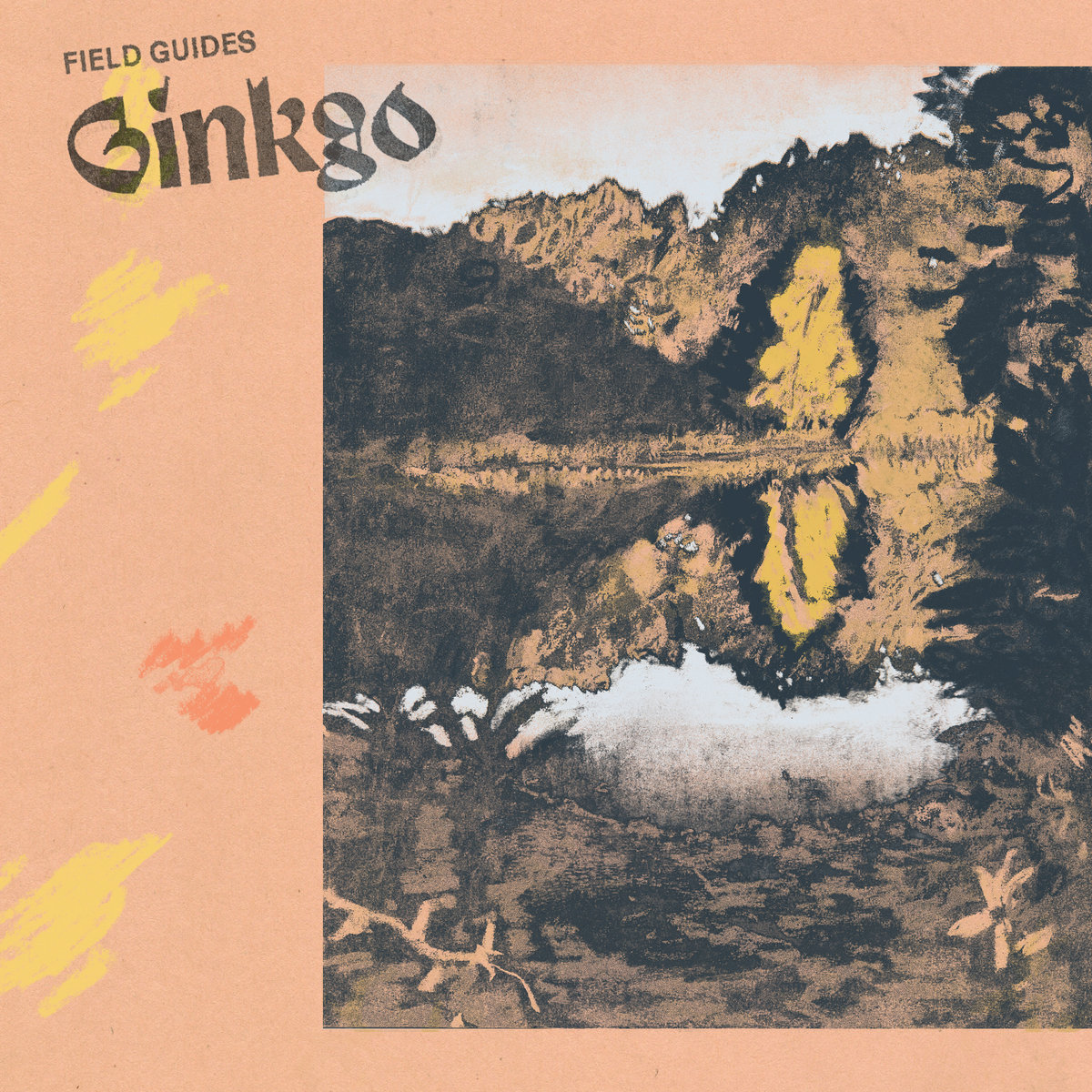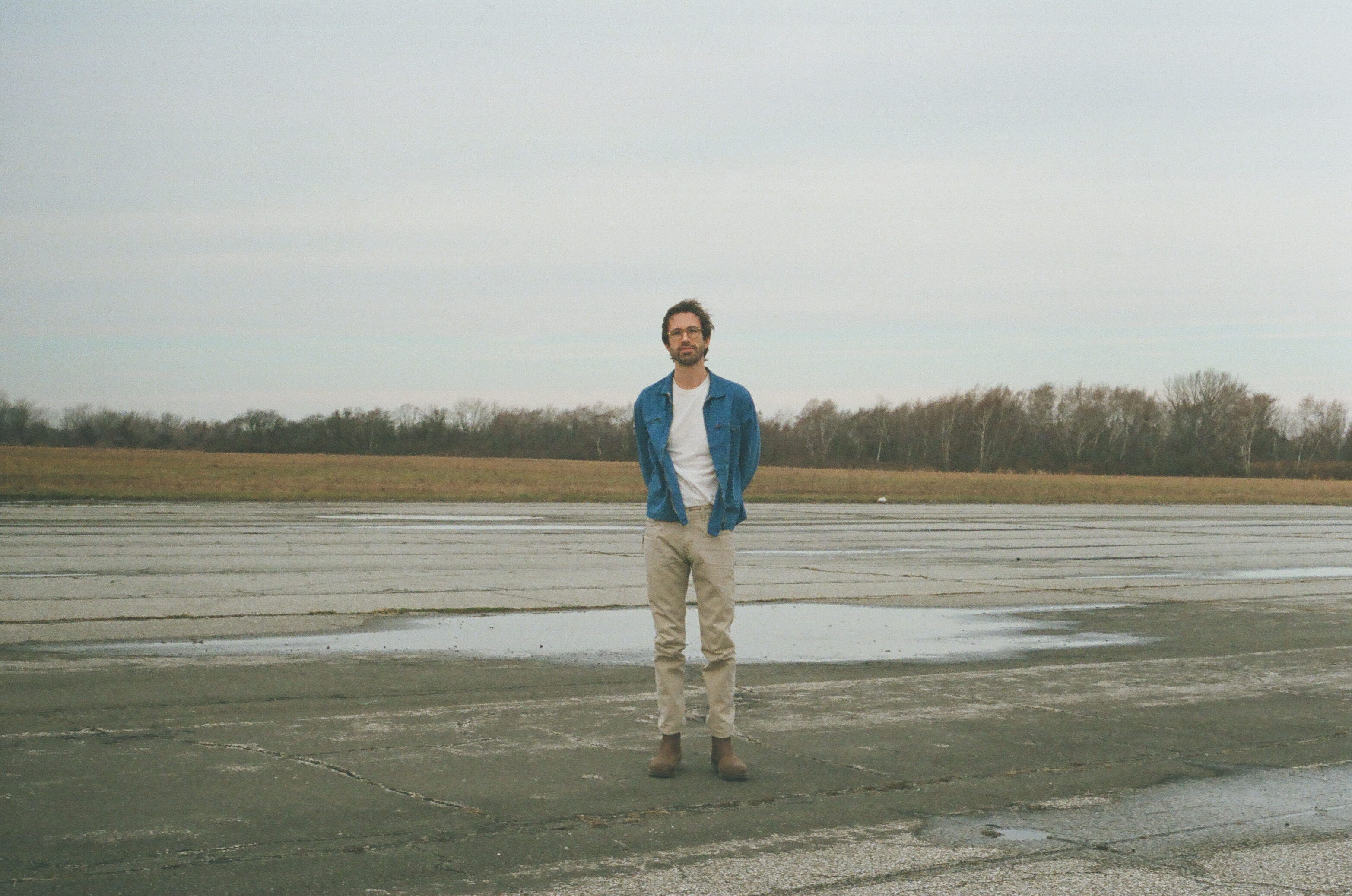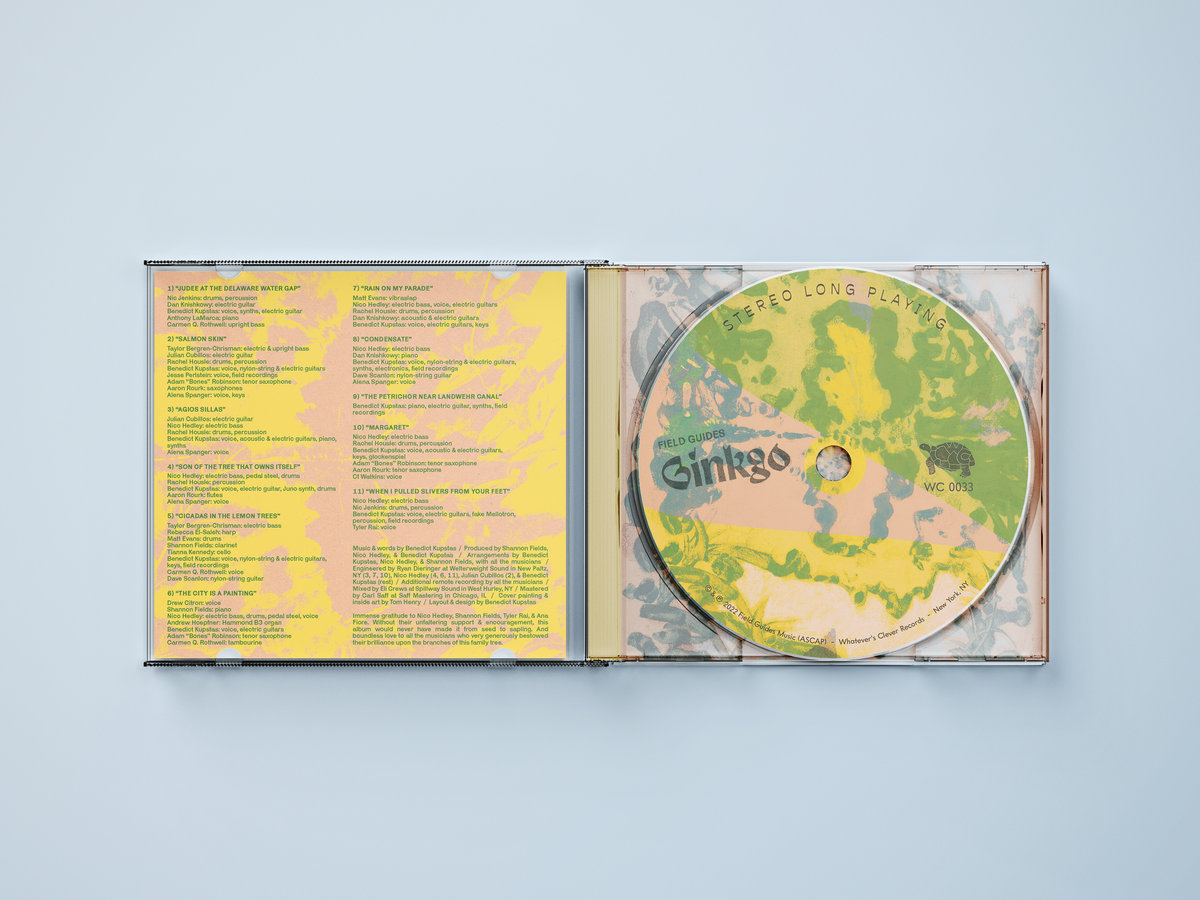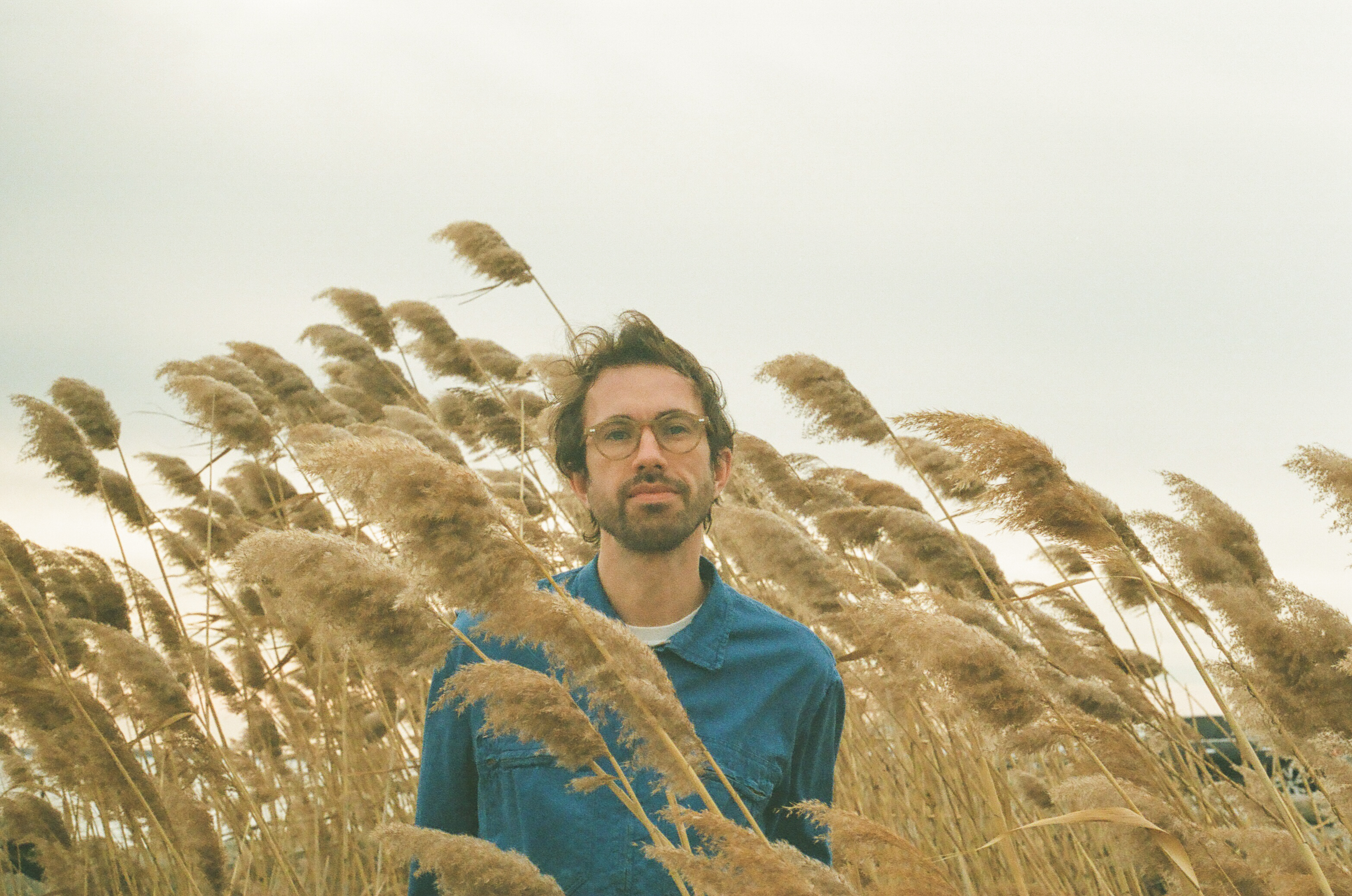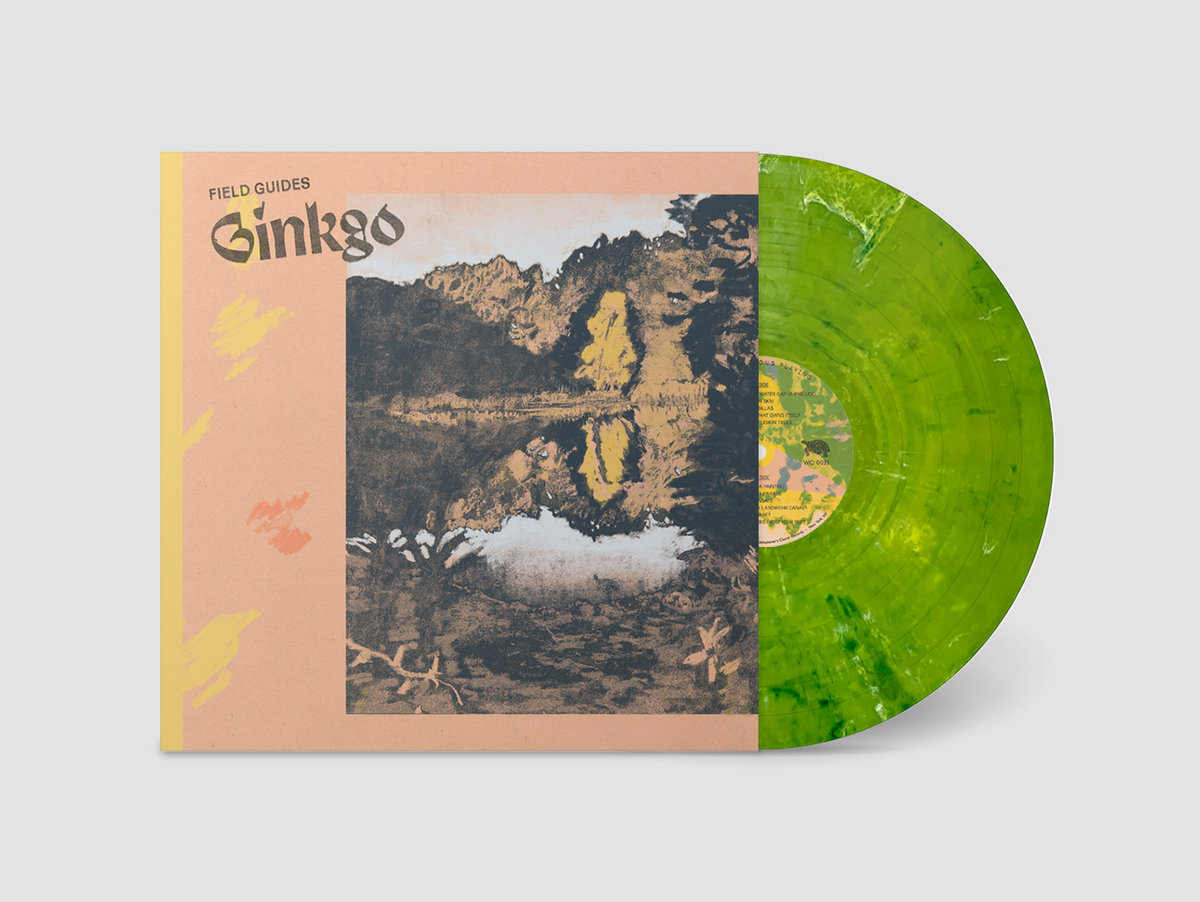With the various accumulating catastrophes of our age, much has been said about hope. Hope is the most important thing, we are made to understand. We should never be without hope. To refuse hope is unacceptable, to imagine a future without it irresponsible if not downright malign. “Stop telling kids that climate change will destroy their world,” argued an article in Vox earlier this month. “Stop telling kids they’ll die from climate change,” implored a similar piece in WIRED. But the problem is that in so much of the contemporary discourse, hope is an abstract force. One lacking shape or weight. If we are to feel it, believe it deep in our chests, then don’t we need a better appreciation of what hope means? How to create it? Shouldn’t we be trying to create the conditions in which it is allowed to take hold?
Enter Ginkgo, the third full-length from Benedict Kupstas’s Field Guides. Released via Whatever’s Clever, the record does not overtly address our collapsing climate or failing culture or any of the other threats before us, but instead faces up to this wider question of hope with the eponymous, extinction-surviving tree at its center. If what we have and have had can no longer be guaranteed, if the futures we imagined can be imagined no longer, then how do we work to adapt? How do we hold on to hope?
Lead single ‘Salmon Skin’ “draw[s] lines between seemingly unconnected things to trace the edges of feelings which might otherwise be too large or unwieldy to properly convey,” we wrote in a preview. The song is indicative of a record built from disparate details, like the chapter of a field guide for Kupstas’s universe, notes on its flora and fauna, its poetry and people, collected not as some lesson in preservation but rather possibility. This was my life then, Ginkgo says, just like Boo, Forever and This is Just a Place before it. What I’ve lost, what I have to lose.
To create such a thing is to position oneself in the strange, human moment that sits between the past and the future. To understand the present as the machinery which processes what was into what will be. We may not have total control over this machine, but there is at least some semblance of agency in understanding its function. To appreciate something’s impermanence is to see it as sacred. To be humble before it, suddenly willing to act and to move. “All that I have is yours for the taking,” Kupstas sings on ‘Margaret’, ostensibly singing to the titular character but just as likely singing to the future itself. “And all that we have is yours for the breaking.” Though the final repetition switches that last line to something more communal, suggesting some latent potentiality for those actively engaged.
And all that I have is yours for the taking
And all that we have is ours for the taking
There’s an inherently personal thread running through the album which illuminates these ideas. On its surface, Ginkgo is a break-up record, with references to Rumours or Shoot Out the Lights adding a degree of context. ‘Agios Sillas’ describes the futility of clinging to past versions of love and lovers, as though they were ghosts already gone. “Should I put some more wood on the fire,” Kupstas asks in the track’s refrain, “or should I snuff it out?” To live with hope is not to conquer the very possibility of something ending, but to live in a manner which allows such questions to be asked. To allow oneself to imagine a future in which the fire continues and another where it is quashed, then to live towards whichever feels most right.
Community is central to this. Field Guides has long been a solo project on paper but not nature, and Ginkgo is no different. The list of collaborators is too long to list, featuring the likes of Nico Hedley, Dan Knishkowy, Dave Scanlon and Cf Watkins among many others. In our increasingly atomised society, cooperation is so often a strictly work-based experience. Further to any final product or artistic intention, projects such as Field Guides feel like a reengagement with the power and utility of working together. Rediscovering hope not via emotion or intellectual reasoning, but through direct practice. You don’t need convincing in this model, the action is proof enough. Because what seemed impossible alone is suddenly impossible no longer. Get a group of people together and look what they might achieve.
Which is why, for me at least, Ginkgo is a hopeful record. Even if it details the end of something. Even if it means acknowledging how nothing can ever last. If one takes the time to notice and appreciate what is around them, Kupstas shows us, to document its details and textures, there’s great joy and beauty to be found. And moreover, there is possibility. Even in the end of things. Field Guides might not know how to save the world or salvage the things within it, but it allows us to see the situation anew. And if hopelessness derives not from terminal pessimism but a failure of the imagination, then surely this is what we must do? Hope is the most important thing, after all. We should never be without hope.
We took the opportunity to speak with Kupstas about the new record to dig deeper into the ideas and intentions behind it, as well as the Field Guides project as a whole:
Hi Benedict, thanks so much for taking the time to chat, and congratulations on the new album. Does the experience of putting out records change with each one?
Thank you Jon and Liam! I appreciate what y’all do so much! There are definitely lots of facets that remain consistent from album to album: the same vacillations between mustering the necessary confidence to believe we’ve made something worth sharing and then losing all perspective and being unable to listen to this thing we’ve spent years living inside…that seems to recur every time. But this one feels different in a few ways. First off, I’ve been more involved than ever helping other folks release music via our collectively-run label, Whatever’s Clever, which has been a really valuable learning experience. And this album contains so many friends, more than twenty in all, so it feels even more like a sprawling family affair than the previous FG records. Shannon Fields and Nico Hedley helped me co-produce this one, which was huge. They’re both brilliant and I wouldn’t have been able to make this without them. I’m really grateful to feel less personal ownership of this music, to share parentage with all the folks involved.
I suppose we should start with the title. Was the album always going to be called Ginkgo? What’s the significance?
The first two Field Guides album’s had titles that were references to beloved poets (Boo, Forever was borrowed from Richard Brautigan and This Is Just A Place is from a poem by A. R. Ammons). And originally I wanted to keep that streak going, so I spent a lot of time pouring through poetry to find a title that fit this collection of songs. Nico and I spent one memorable afternoon drinking whiskey and spreading volumes of Emily Dickinson and Anne Carson and so many other poets across his kitchen table, trading lines back and forth.
I noticed early in the process of assembling these songs that there had been an unconscious shift in my writing from fauna to flora, and that trees made several appearances. As we were coming up short looking for the perfect poetic reference, my impulse shifted toward a blunt, single-word noun, a categorical label. I recalled an article about the hibakujumoku or “survivor trees” in Hiroshima, the trees (many of them ginkgo) that had somehow survived the atomic bomb in 1945. They’ve become symbols of resilience and endurance in the face of our most destructive tendencies. I got a bit obsessed with ginkgos after that. I read about how they had already survived a huge mass extinction during the Pleistocene and are considered a “living fossil,” a relic of a distant evolutionary moment. In New York, they’re largely known for an unpleasant odor when the female trees fruit in the spring, but I’ve always loved their scraggly branches and the way they carpet the sidewalks in unique, bright yellow leaves in the fall. The use of ginkgo biloba extract as a memory aid also felt apt given the album’s themes.
More and more, that seed of symbolism took root—I kept discovering new synchronicities—and at some point there was no longer any question that this thing would be called Ginkgo.
The very first words of the new record refer to the previous Field Guides release. “This is just a place / and you are just a song.” Could you talk a little on how you position this album in relation to This is Just a Place? Do you see it as a direct continuation? More of an evolution? A confrontation?
I’ve always loved art of any medium that develops its own self-reflexive, cross-referential, subtextual mythology. The way writers like David Mitchell or Anne Carson weave threads or revisit characters across different books, or the way songwriters like Dan Bejar or Phil Elverum return again and again to certain themes or motifs. I’m generally just a sucker for interpolation and quotation and love leaving breadcrumbs that someone might follow beyond a song’s lyrics. So, yeah, it was a very deliberate choice to begin this album with the title of the previous one, implying an ellipsis, picking up where we left off. (I enjoy the idea that, should a listener want to engage with the album more inquisitively, there are some fun little Easter eggs hidden about.) But I also love your idea of it being a confrontation with the prior work. This album was conceived and recorded during so much upheaval and loss, so it does feel like a break—naming a thing so that we can move on from it. “That was just a place, and now we find ourselves elsewhere.”
One of the most distinct layers is highly personal. There’s a sense of tension coursing beneath the record, a personal turmoil which surfaces from time to time (e.g. the line “Should I put some more wood on the fire / or should I snuff it out?”). If it’s something you’re comfortable discussing, I’d be interested in hearing if this was in any way intentional. If we’re witnessing the breakdown of something, did you set out to map this process? Or did it unravel coincidentally and happen to change the direction of the record?
Oh, so you caught that. Yeah, lots of the songs were written during a protracted breakup (and breakdown), very much in dialogue with a romantic and creative partner during the dissolution of that relationship, which in retrospect was potentially a bit masochistic and unkind. I wasn’t consciously using the songs as a place to have those conversations, but it does feel that way a bit now. The idea of “mapping” feels especially apt because the songs do indeed chart a tumultuous personal trajectory that also happened to correspond with geographic dislocation. The final chapter of that relationship played out while traveling overseas, literally mapping the disintegration of that relationship to specific places. I think art is often a futile attempt to capture with some permanence certain ephemeral, fleeting feelings that we’re unable to process, that seem too big to grasp. But hopefully there’s something beautiful even within that futility or failure.
The idea of working to save something vs. recognising an end feels very much relevant in a wider context too. Running parallel to the personal threads of the album is something more universal. Your work often references the natural world for example, and therefore calls in all the wonder and dread associated with that as we fall further into the breakdown of our climate. Some degree of this is just a product of living in the world we do (all fiction is climate fiction, as Nishant Batsha argued in a recent essay), but I’m curious how conscious or intentional you are in addressing such themes.
Thank you for sharing that essay! I just read it and it’s terrifyingly on-point but also shows how art can—and, in my opinion, has a responsibility to—illuminate a path through all the appropriate anxieties of the Anthropocene. This is definitely what I spend a huge chunk of my time thinking about: how art and activism fit together and how we construct communities that are braced against climate (and cultural) collapse while leaving lots of room for joy and beauty. I again want to quote part of your question back to you: the blurry, liminal space between “working to save something” vs. “recognising an end” seems to be where we’re all spending more and more of our time, doesn’t it? Letting go of a failed relationship—or a stable, hospitable climate—without abandoning hope or conflating change with finality, without succumbing to fatalism, can be really tough. We tend to either cling or run. The writers Robert Macfarlane and Richard Powers have both talked about the way geology and trees can give us a glimpse of “deep time” and expand our ethics. If I can share a quote from Macfarlane’s book Underland:
For to think in deep time can be a means not of escaping our troubled present, but rather of re-imagining it; countermanding its quick greeds and furies with older, slower stories of making and unmaking. At its best, a deep time awareness might help us see ourselves as part of a web of gift, inheritance and legacy stretching over millions of years past and millions to come, bringing us to consider what we are leaving behind for the epochs and beings that will follow us. When viewed in deep time, things come alive that seemed inert.
Could we talk about hope directly? Hopelessness is so often treated as a flaw specific to unserious doomers or dangerous nihilists, but ‘hope’ as it is thrown around in the contemporary discourse can feel so wispy. A Donald Barthelme quote pops up at the end of the press release: “mixing bits of this and that from various areas of life to make something that did not exist before is an oddly hopeful endeavour.” Is the work of Field Guides hopeful? And what does such a thing mean to you?
Ha, I wrote the above before reading this question, but it’s very clear our thoughts are traveling the same road here! I loathe nihilism. I think it’s among the worst of our human tendencies. Hope is often seen as a lofty or, as you say, “wispy” orientation in the face of all we’re up against. But I’ve heard folks distinguish between hope and optimism. Optimism can be a passive stance, and at this point it feels pretty naïve. But hope should demand engagement; it comes along with the imperative to close the gap between the current reality and some hoped-for future. And I think this version of hope also requires humility, a shattering of solipsism and atomization. I certainly hope that my songs are hopeful. I hope they reach beyond any layers of self-indulgence and offer something comforting but new.
Finally, I’m interested in how you see Field Guides, now and moving forwards. On the one hand it feels a highly personal thing, but there’s always a wide array of guests who contribute too. Like a solo project which couldn’t exist without collaboration. Does it feel like a solo project, or something you now share with a wider community of artists?
I’m never quite sure what this project is: whether it’s a band or an amorphous solo thing… On this album, more than ever, it doesn’t really feel like either. I realize that I could feel more comfortable owning the voice at the center of this music, but I also love and feel immensely grateful that I get to share this thing with so many new and old friends who made it with me. It does feel like a community, like a big messy family. My buddy Ben Seretan had a great analogy for this record, describing it like “raising a barn together.” I wouldn’t ever want to try to raise a barn by myself.
Ginkgo is out now via Whatever’s Clever and you can get it now from the Field Guides Bandcamp page.
Photos by Dave Scanlon

